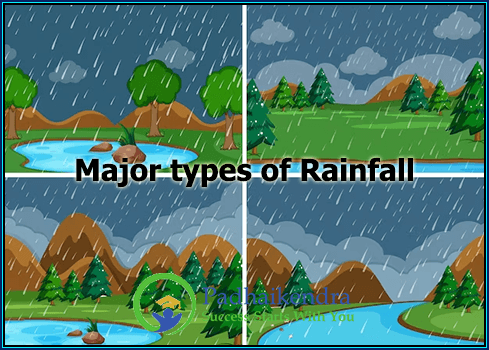There are three major types of rainfall, including:
- Convectional Rainfall: Convectional rainfall occurs when the ground is heated by the sun, causing warm air to rise rapidly and cool as it reaches higher altitudes. As the air cools, water vapor in the air condenses to form clouds, and precipitation occurs. This type of rainfall is common in tropical regions with high temperatures and humidity levels.
- Orographic Rainfall: Orographic rainfall occurs when moist air is forced to rise over elevated landforms such as mountains. As the air rises, it cools and condenses, leading to precipitation. The amount of precipitation depends on the elevation, slope, and orientation of the landform. Orographic rainfall is common in areas with high relief, such as mountain ranges.
- Frontal Rainfall: Frontal rainfall occurs when two air masses with different temperatures and moisture levels meet. The boundary between these air masses is called a front. As the warm, moist air rises over the cooler, drier air, it cools and condenses, leading to precipitation. Frontal rainfall is common in temperate regions where warm and cold air masses frequently collide.
Each type of rainfall has its unique characteristics and can have a significant impact on the environment and human activities. Understanding the type of rainfall occurring in a region is crucial for predicting weather patterns and managing water resources.





